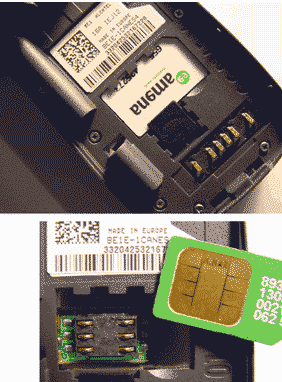![]()
GSM
(Global System for Mobile Communications) A
digital cellular phone technology based on TDMA that is the predominant system in Europe,
but is also used around the world. Developed in the 1980s, GSM was first deployed in seven
European countries in 1992. Operating in the 900MHz and 1.8GHz bands in Europe and the
1.9GHz PCS band in the U.S., GSM defines the entire cellular system, not just the air
interface (TDMA, CDMA, etc.). As of 2000, there were more than 250 million GSM users,
which is more than half of the world's mobile phone population.
GSM phones use a Subscriber Identity Module (SIM) smart card that contains user account
information. Any GSM phone becomes immediately programmed after plugging in the SIM card,
thus allowing GSM phones to be easily rented or borrowed. SIM cards can be programmed to
display custom menus for personalized services.
GSM provides a short messaging service (SMS) that enables text messages up to 160
characters in length to be sent to and from a GSM phone. It also supports data transfer at
9.6 Kbps to packet networks, ISDN and POTS users. GSM is a circuit-switched system that
divides each 200 kHz channel into eight 25 kHz time slots.

Vive la Cellphone!When GSM phones were first introduced, they were reported to produce a deafening
sound for hearing aid wearers and to interfere with electronic devices such as pacemakers.
Swedish hospitals banned them. An Australian newspaper claimed a motorist set off his
airbag with one, and most curious, in Paris, they were said to occasionally reset taxi
meters to zero.

The SIM Card The back of a GSM phone opens up, and the little SIM card is inserted, in
this case from Europe's Amena cellphone service. The bottom view is the card out of the
socket showing contact points.
Evolution of 3G Technologies This chart shows the evolution of carrier technologies
throughout the world as they move from standard cellphone services to high-speed data
capabilities. (Diagram courtesy of Dr. Roger Peterson, Motorola Research Laboratory.)